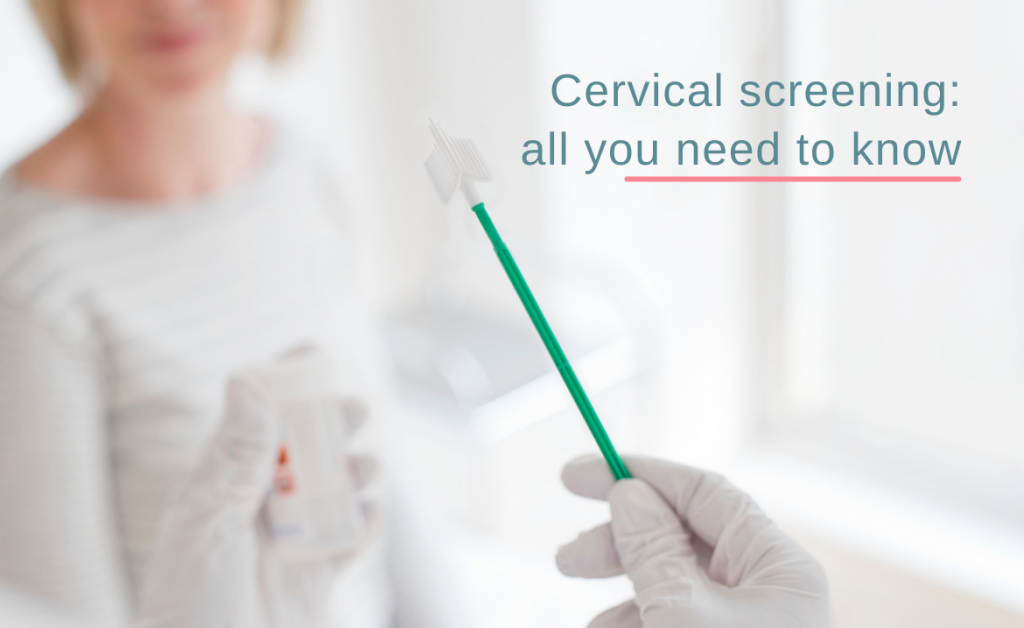As a woman, you will have undergone a cervical screening test a number of times in your adult life. It is an essential part of women’s healthcare and helps to pick up on any abnormal cells and treat them before they become a matter of concern. An example of this is Cervical dysplasia.
Cervical dysplasia is also known as Cervical Intraepithelial Neoplasia (CIN). This is the medical term for a precancerous condition in which abnormal cells grow on the surface of your cervix.
While the term ‘precancerous’ might scare you, remember these are not cancerous cells, and with proper care and treatment, they rarely develop into cancer. To put your mind at ease, in this article, we provide insights on the causes, diagnosis, and treatment options available.
What causes cervical dysplasia?
Most commonly, the human papillomavirus (HPV) is the cause of cervical dysplasia. It is one of the most common sexually transmitted viruses. Other risk factors include
· Exposure to radiation
· Smoking/exposure to second-hand smoking
· A weak immune system
While it can range from mild to severe, as mentioned earlier, it rarely develops into cancer. In most cases, it disappears on its own. Whilst in some low-risk situations, abnormal cells may cause genital warts.
What are the symptoms of cervical dysplasia?
If you have cervical dysplasia, you may not even know it. This is because, in most cases, the immune system eliminates HPV and kills the infection. In the rare case that abnormal cells turn cancerous, you may experience the following symptoms:
- A heavier menstrual cycle that lasts longer than usual
- Bleeding after menopause
- An increase in vaginal discharge
- Pain during intercourse
- Abnormal bleeding between your regular menstrual cycle
Should you experience any of the above symptoms, you should consult your doctor for a diagnosis.
How is cervical dysplasia diagnosed?
The cervical screening test (formally known as the pap smear) is a necessary first step in diagnosing cervical dysplasia. Hence, it is essential for all women aged 18 and over that are sexually active to have a regular CST. This will help detect any abnormal cells, should there be any, early.
If your CST results show the presence of abnormal cells, your doctor will take the necessary action to monitor and treat the abnormal cells depending on the level of risk. Generally, you may find yourself to be in one of three categories.
- Low-risk (CIN 1): Your doctor will invite you to have another CST in five years.
- Intermediate risk (CIN 2): You will be invited back for an HPV test in twelve months.
- High-risk (CIN 3): Your doctor will refer you to have a colposcopy. A colposcopy is a procedure to look at your cervix and vagina through a microscope to identify areas that may appear abnormal. During a colposcopy, Dr Kothari uses a colposcope. An instrument that looks like a large microscope to obtain a magnified view of your cervix.
What are the treatment options for cervical dysplasia?
The treatment of cervical dysplasia will depend upon the severity of the condition. As mentioned, if you fall into the low-risk category (CIN 1), your doctor may monitor the cells over time and may not choose to treat them immediately.
If you are in the CIN 3 or CIN 4 category (intermediate/high risk), treatment options include:
- Cryosurgery: involves freezing the cells.
- Laser therapy: involves using a highly focused laser beam to cut the abnormal tissue.
- Wire loop extension (LEEP): Involves using a semi-circular wire loop to remove the portion of the cervix containing the precancerous cells.
- Cone biopsy: involves removing a cone-shaped section of the abnormal tissue.
The type of treatment you receive will depend upon the severity of the condition, your age, and you’re your personal circumstances.
Preventing cervical dysplasia
There are a few steps that you can take to reduce your risk of getting HPV and cervical dysplasia.
- Speak to your doctor about getting an HPV vaccination. In Australia, the HPV vaccine is free for girls and boys aged 12-13 under the National Immunisation Program at their school.
- Practice safe sex by using condoms or other barrier methods.
- Look after your immune system by avoiding hazardous health habits such as smoking.
Most importantly, you can prevent cervical dysplasia from leading to cervical cancer by getting regular cervical screening tests.
Book your cervical screening test today
If you are between the age of 25-74, have been sexually active, have not had a screening test in the past five years, or have abnormal screening test results, we recommend you book an appointment with your GP or see Dr Kothari at your earliest convenience.
To book your cervical screening test, call us on 02 4225 1999.

